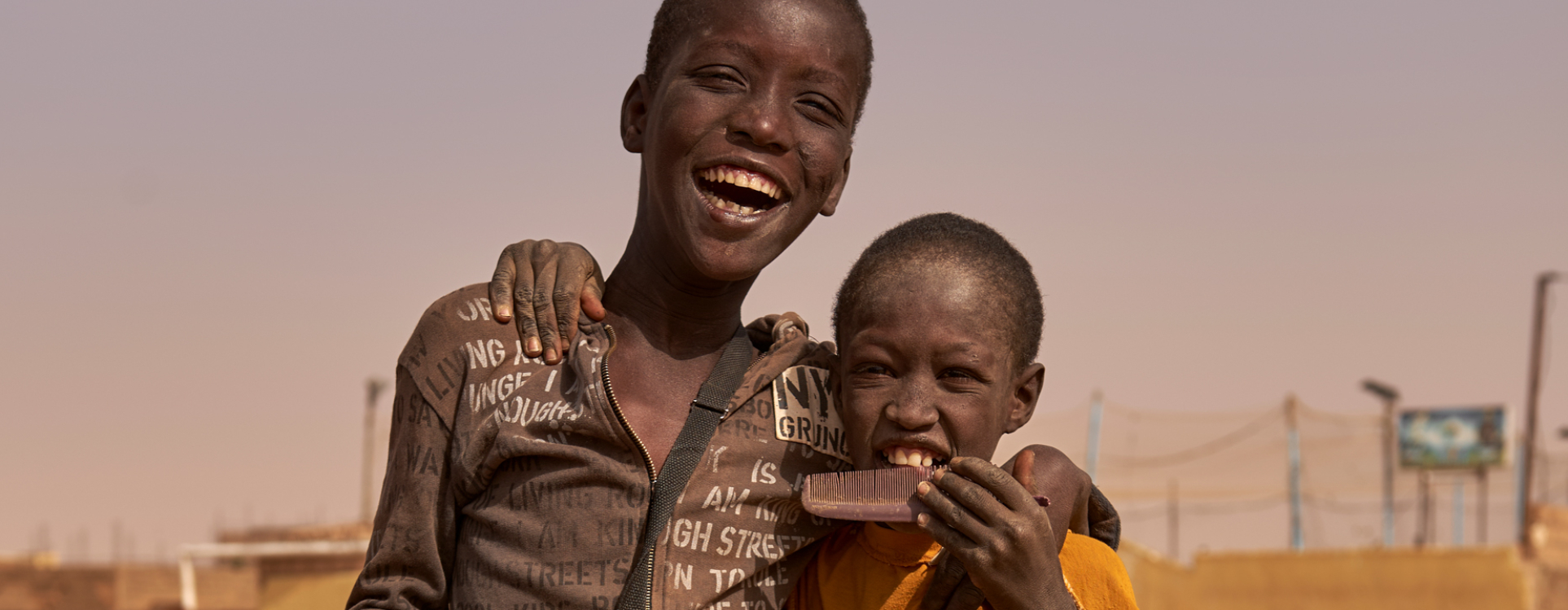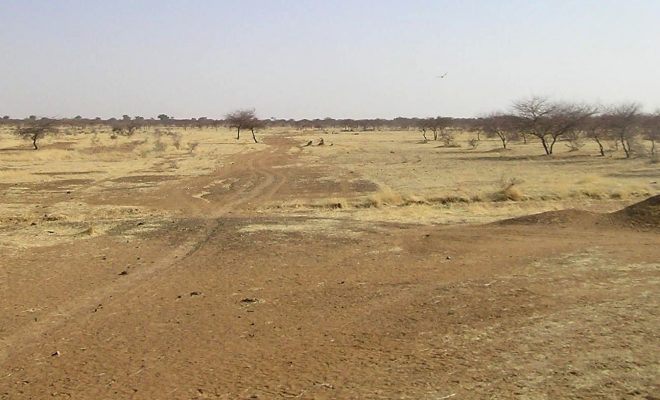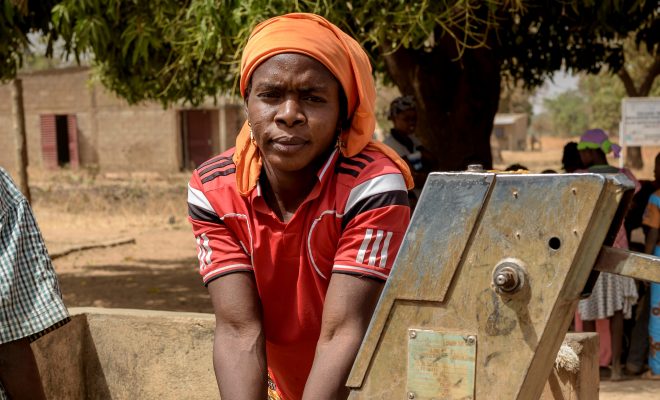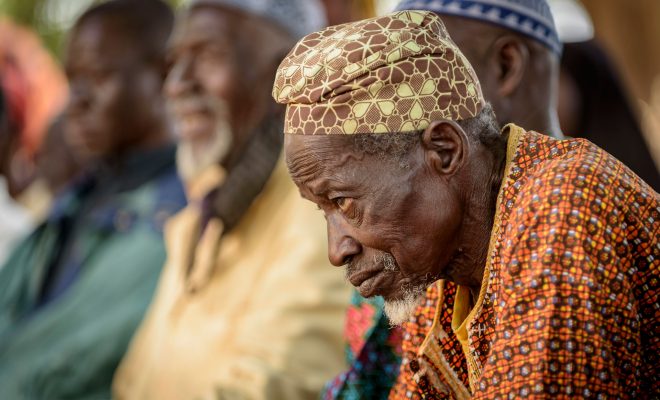
As heatwaves break records and rains become increasingly erratic, farmers in the Sahel are adapting. Chavez/World Bank
A year ago, villagers in Mali barely left their small adobe homes. Under the sparse shade of acacia trees, their goats sought shelter from outdoor temperatures exceeding 48°C. Meanwhile, in the city of Kayes and the capital Bamako, more than 200 people died of hyperthermia in overcrowded, under-resourced health centres. The heatwave also hit neighbouring countries: in Burkina Faso and Niger, temperatures topped 46°C for several days. It was the most intense heatwave ever recorded in the region.
Inside their modest homes, farmers enjoyed temperatures up to 10°C cooler. Congregants in mosques like Djenné in Mali or Bani in Burkina Faso experienced up to 15°C less than the scorching streets outside. Without air conditioning or fans, Sahelians rely on ancient technology to cope with the heat: thick adobe walls—an age-old wisdom now gaining new relevance.
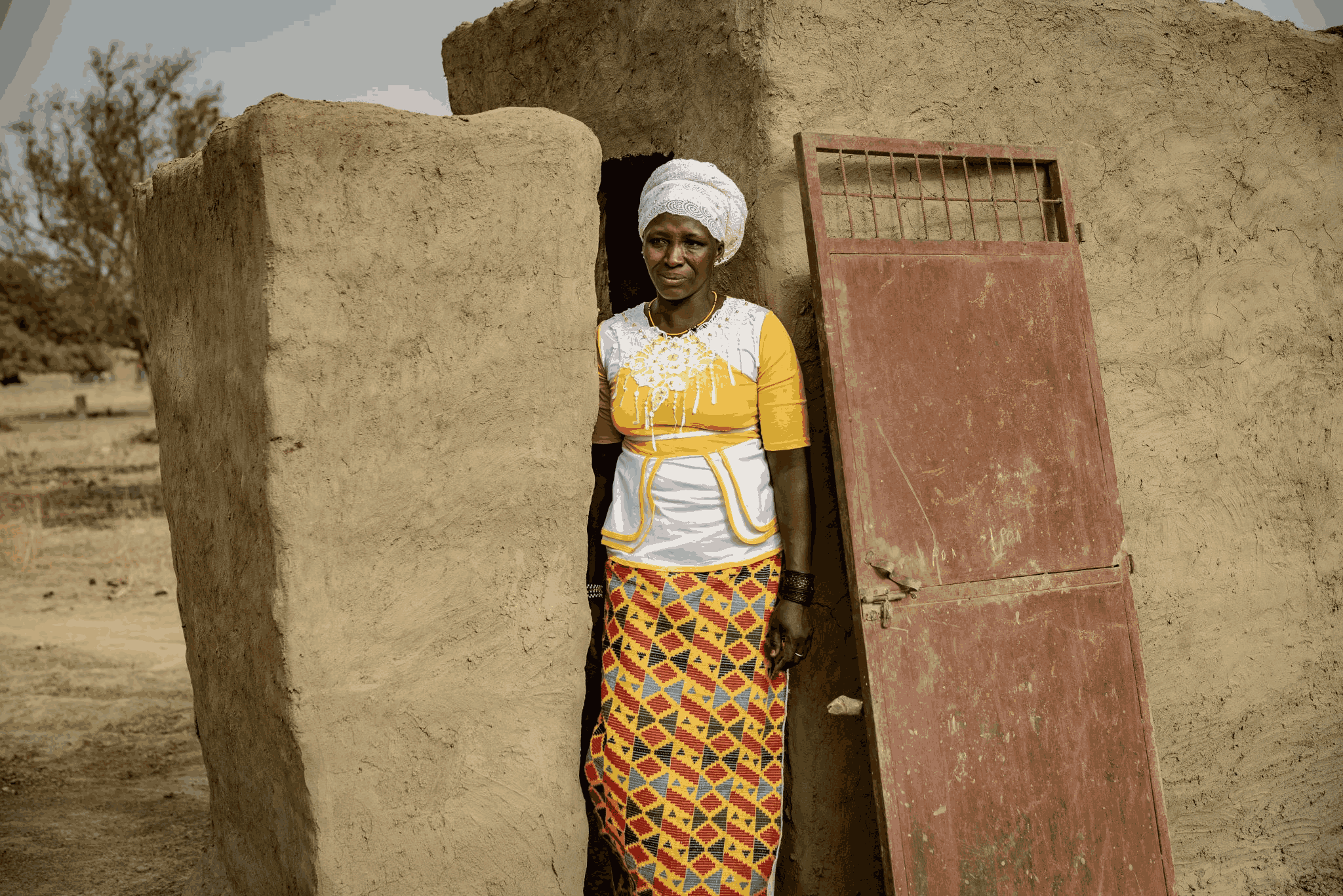
With proper natural ventilation, adobe buildings are the most accessible tool rural Sahel communities have to combat extreme. © Carlos Garriga/ WAWF
Adobe: The Efficiency of Ancient Craftsmanship
Adobe is one of the oldest building materials in the world. It’s handcrafted by forming blocks of clay mixed with water and straw, dried livestock manure, or rice husks, then dried in the sun—resulting in a carbon footprint far lower than kiln-fired bricks.
With proper natural ventilation, adobe buildings are the most accessible tool rural Sahel communities have to combat extreme heat. Burkinabé architect and Pritzker Prize winner Francis Kéré strongly advocate adobe, adapting it to modern designs.
Adobe houses are the best-known example of the call to recover vernacular architecture systems based on ancestral cultures, which is seen as the most cost-effective and sustainable way to “inhabit the climate.” Other examples include Arctic ice igloos, Mongolian yurts made of wood and felted sheep wool, and palm-thatch and mud huts found in the rainy areas of Africa, Central America, and Southeast Asia. Human communities have adapted to climate and environment using local materials for millennia.
Pits Against Hunger and Desertification
Last year’s heatwave coincided with another devastating drought. Many farmers who endured the heat in adobe homes also saved their crops using drought-resistant seeds and traditional farming methods such as tassa and zaï, now recognized as some of the most effective tools for increasing climate resilience in the region.
The tassa technique involves digging small crescent-shaped pits no more than two meters in diameter on gentle slopes. These are filled with manure or biodegradable waste, where seeds are then sown. When it rains, water is retained in the pits longer, and runoff deposits sediment at the bottom.
Zaï pits, used mainly in Burkina Faso and Niger, are smaller—typically 20 to 30 cm in width and depth. Farmers fill them with a mix of compost, manure, and sometimes organic waste.
In the 1980s, during one of the Sahel’s worst droughts, Burkinabé farmer Yacouba Sawadogo improved the zaï method. He noticed termites were attracted to the manure in the pits and that their tunnels helped aerate the soil and retain moisture. He began digging the pits long before planting season so crops would grow in moister soil. Later, he started planting trees around his fields, reclaiming deforested and desertified land. These trees increased soil moisture and raised the water table, creating a thriving and increasingly diverse forest.
Despite early scepticism, the zaï technique quickly transformed hundreds of hectares of degraded land into fertile fields and forests. By 2016, the method is estimated to have restored tens of thousands of hectares in Burkina Faso’s Yatenga and Gourcy provinces. Recent studies claim zaï can increase crop yields fivefold under optimal conditions.
In 2018, Yacouba Sawadogo was awarded the Right Livelihood Award, also known as the “Alternative Nobel Prize.” His legacy transformed Burkina Faso’s landscape and inspired land restoration programs across the Sahel.
Meanwhile, the tassa technique has proven much more effective at reducing erosion from runoff than traditional methods. Some studies show grain production has increased from 420 kg/ha to 1,149 kg/ha in certain areas. In Niger, during the 2014 drought, farmers using tassa managed harvests that ensured their survival. This led to its adoption on 70 hectares the following year and, later, the rehabilitation of 4,000 hectares of degraded land.
There’s a fascinating parallel between the zaï and tassa techniques of the Sahel and traditional farming systems in Spain’s Canary Islands—particularly in Lanzarote’s vineyards. After volcanic eruptions in the 18th and 19th centuries, local farmers devised a unique method to grow vines in ash-covered soils with minimal rainfall and strong winds: they dug circular pits in the ash to plant each vine. The volcanic ash acts like a sponge, capturing dew and minimizing evaporation.
In two regions thousands of kilometres apart, farmers arrived at remarkably similar solutions—proof that adapting to harsh environments can come from local ingenuity and close observation of the land.
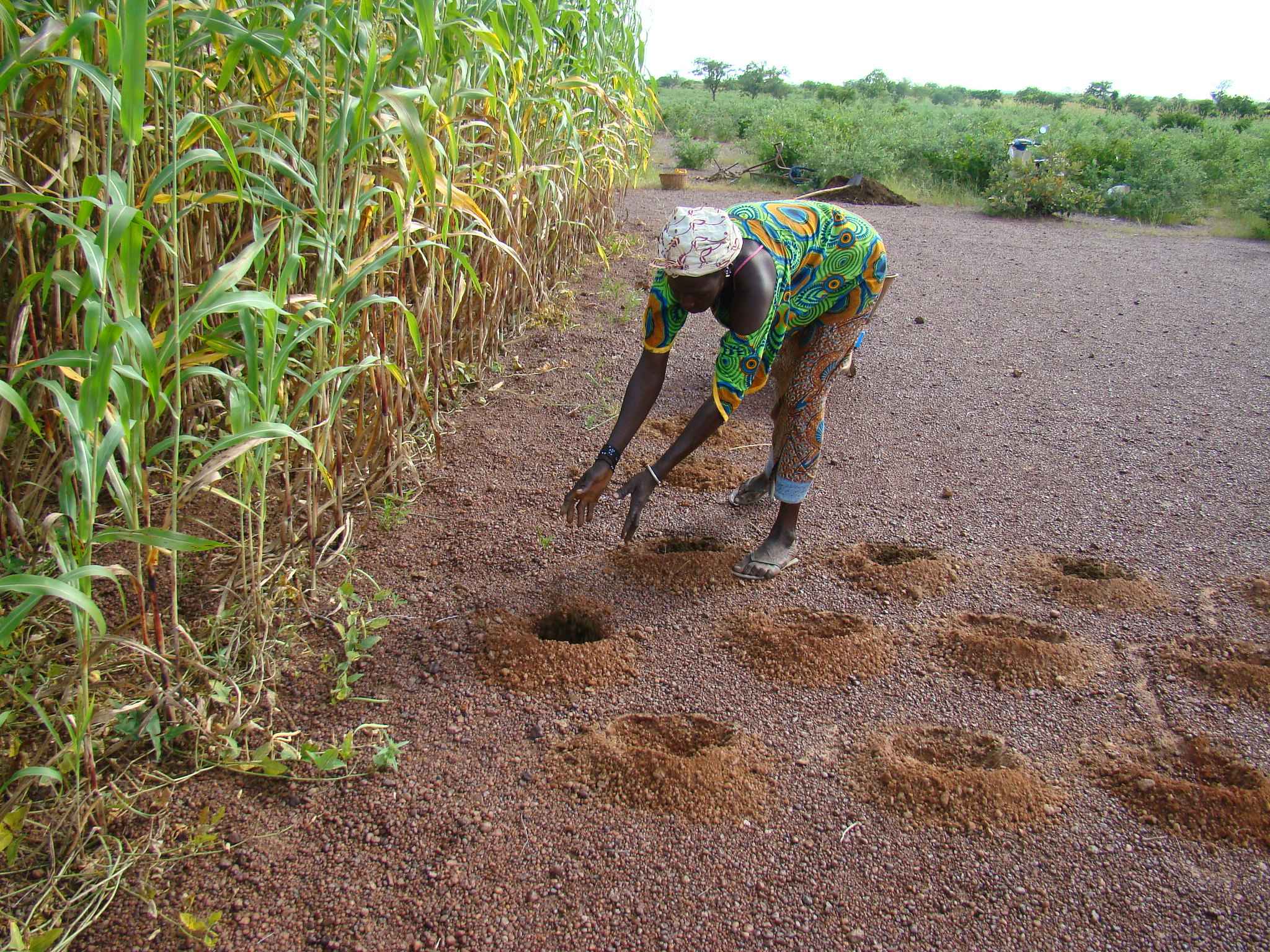
Many farmers who endured the heat in adobe homes also saved their crops using drought-resistant seeds and traditional farming methods such as tassa and zaï. © M. Tall (CCAFS West Africa).
Hope from the Hunger Belt
Between 1984 and 1985, a severe drought triggered a humanitarian crisis that made international headlines and gave rise to “the hunger belt”—a label that still haunts the region.
Since then, the developed world has paid closer attention to the Sahel, witnessing how successive climate crises have rapidly degraded its soil. These events helped prompt the creation of the United Nations Convention to Combat Desertification (UNCCD). One of its first moves was to define desertification as “land degradation in arid, semi-arid and dry sub-humid areas resulting from various factors, including climatic variations and human activities.” The Sahel served as the reference case.
Today, Sahelian farmers fight climate adversity using ingenuity and passive water harvesting techniques to survive. According to the IPCC, the region contributes just 1% to global climate change but will warm at least 1.5 times faster than the global average.
Despite political instability, violence, and climate change challenges, the Sahel is home to highly adaptive, resilient survival farming—deeply rooted in ancestral knowledge.
We must see the Sahel not only as a region in crisis but as a key to understanding the limits of climate change and the power of local adaptation. Local and international organizations are promoting the region’s architectural and agricultural techniques as examples of traditional knowledge-based solutions and effective climate adaptation. These practices are low-cost, replicable in other semi-arid regions, and free from technological dependency. They offer a globally valuable adaptive guide.


